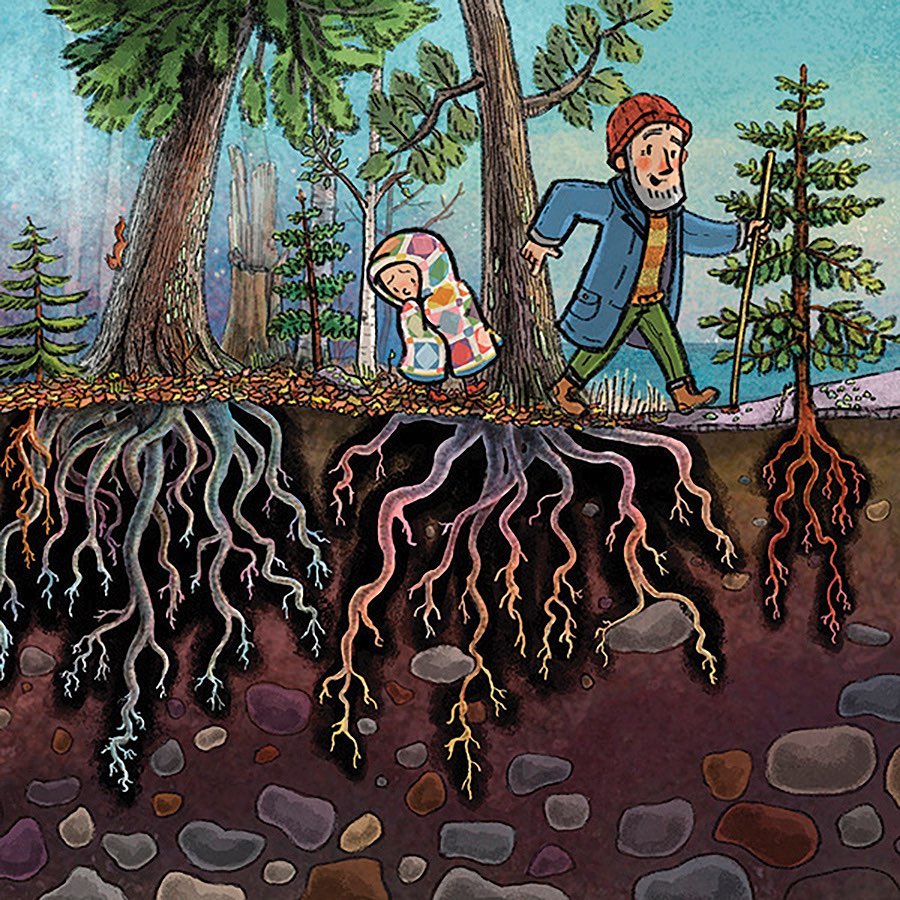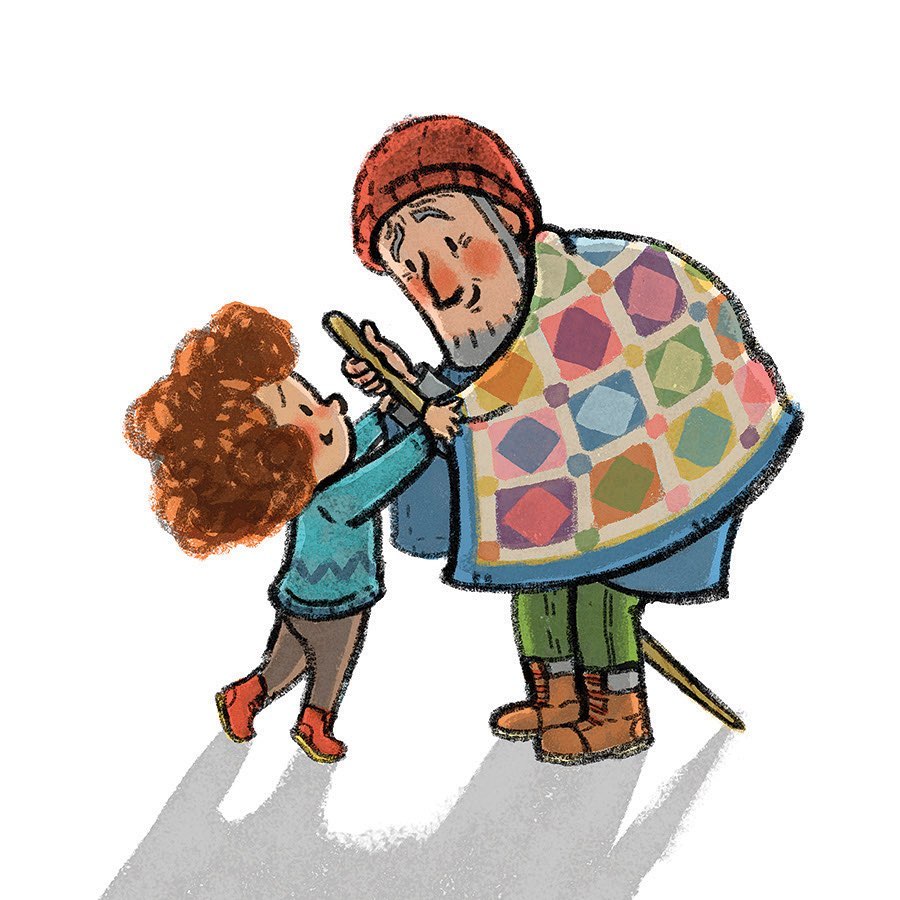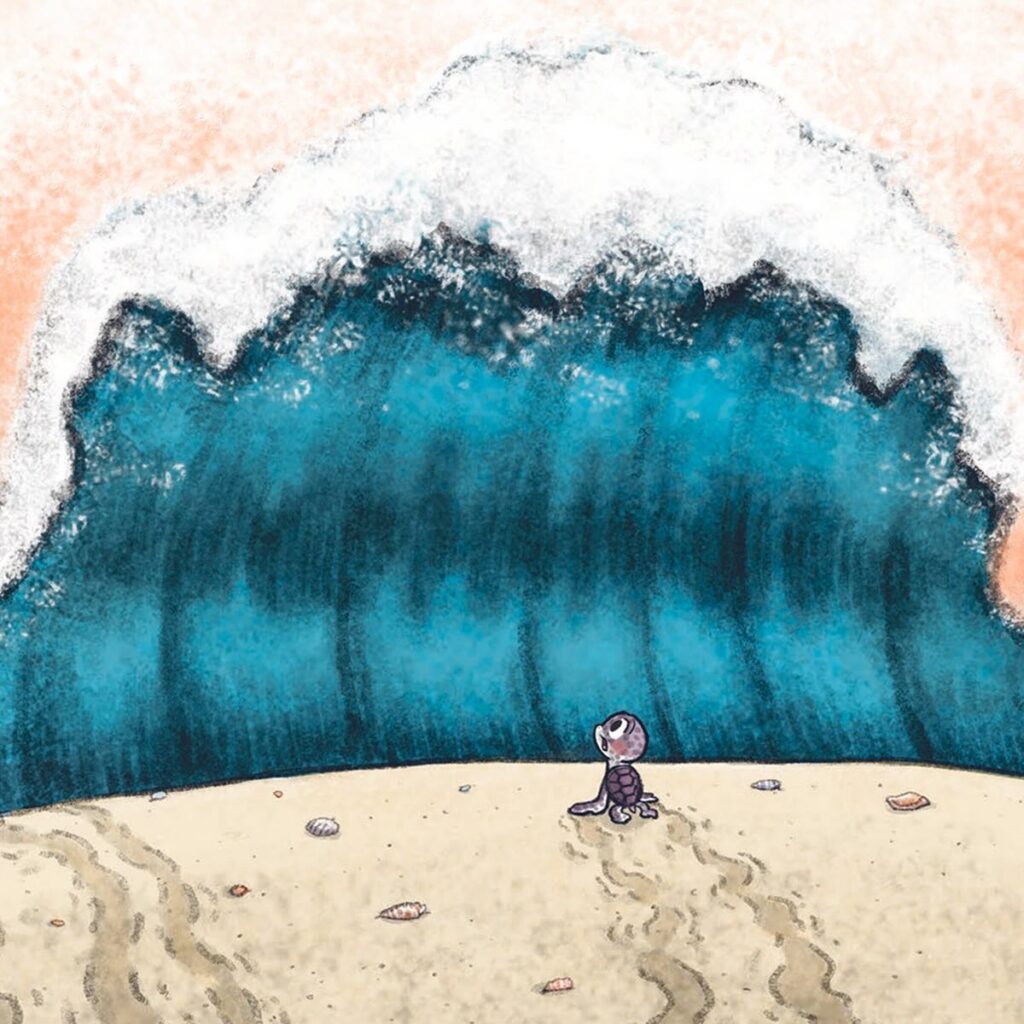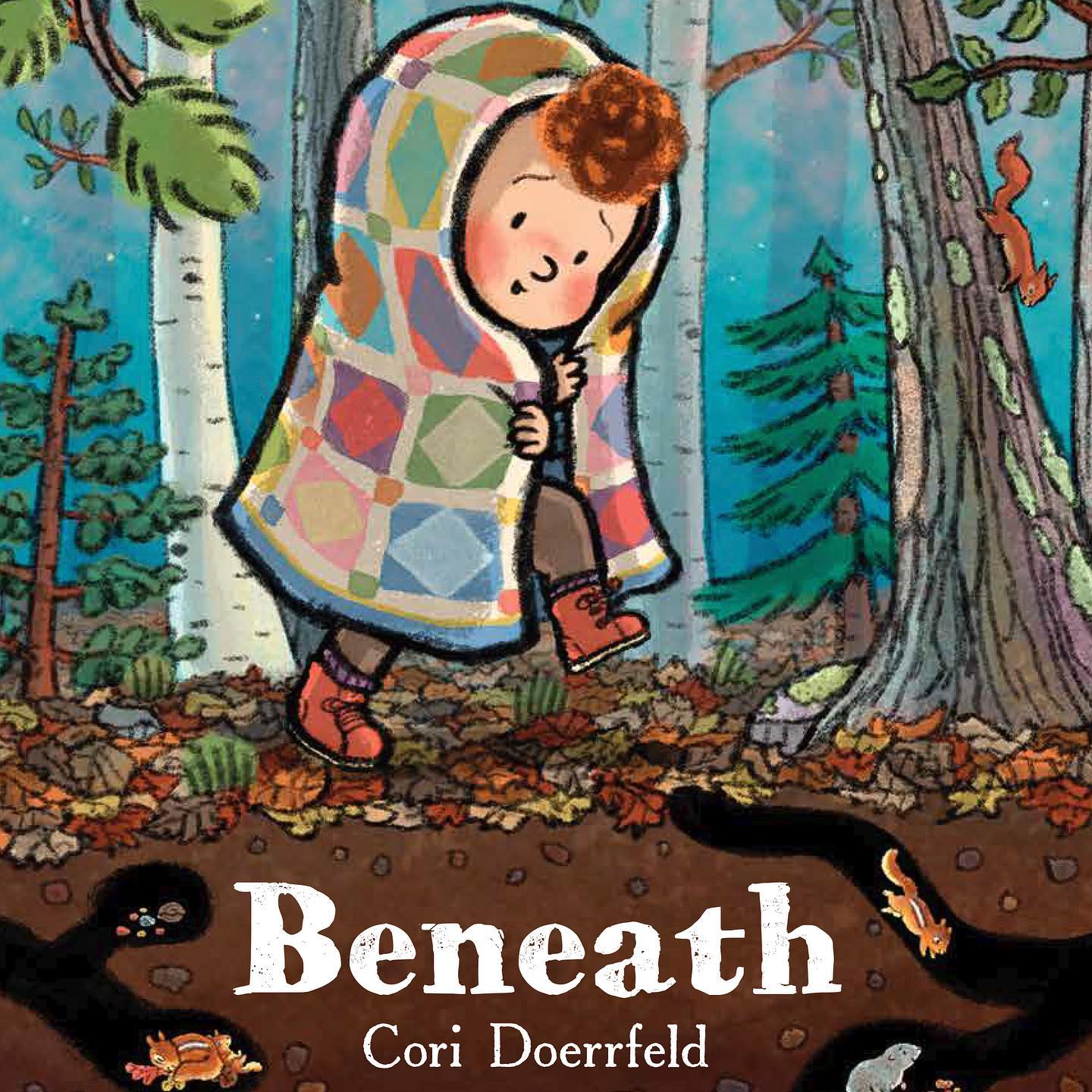Speaking with any child about the loss of a loved one is extremely challenging and is one of those moments where parents, carers or teachers wish that there was a tried and tested script for exactly what to say. While neither of these books provides a literal script, they are two of the best we have come across for providing a space that opens the door to this sensitive conversation.
Beneath by Cori Doerrfeld shows children that people’s feelings aren’t always obvious to the naked eye and that there can be events going on in someone’s life that we are not aware of from just looking at them. It also shows that a person’s hidden feelings can impact on what they are showing on the outside, i.e. why they might make certain choices or behave in a certain way. And ultimately it teaches that talking to someone when you’re hurting is the key, and that often the people who you are closest to, who are also probably hurting, might be the best people to help you through your grief.

The Rabbit Listened by Cori Doerrfeld is also brilliant for teaching children (and adults) that sometimes the best thing to do for someone who is grieving is simply to sit and give them the space to talk. We often want to say the magic words that take the pain away, but The Rabbit Listened suggests that giving someone a safe space to either sit quietly, or talk when they’re ready, is often a better approach.

1. Where did you first get the idea for creating a book that showed young children that people’s feelings and emotions are not always obvious to the naked eye?
The very first spark of inspiration for Beneath actually came from a visit to the zoo with my son’s school. There was a large snake skeleton on display and I thought it was so amazing that such a different looking creature has bones beneath its skin that resemble some of our own. I’ve always loved drawing connections between humans and nature and really got excited thinking about making art that revolved around that. The actual storyline, however, was inspired by when my own grandfather passed away. It was the first time I saw my entire family grieve, from the oldest to the youngest, and it all looked so different. That’s when I really started to think about how people can be feeling something similar but how they express those feelings varies so much. Most kids are very obvious with how they feel. Their emotions almost feel too big for them to hide. I think kids often assume because grownups seem more composed that they won’t understand those big feelings. I wanted to remind kids, and everyone who reads Beneath, that we are all made of layers. What we see on the outside is just the surface, and remembering everything beneath helps us all feel more understood and connected.
2. ‘Beneath’ has so many clever visual clues included in the illustrations to help show the concept of not everything always being clear and obvious on the surface. How long did it take you to develop all of these ideas and is there one that you felt particularly pleased with once you’d developed it?

Beneath did go through several drafts, and even some rejections by publishers as I developed the story. Most of the visuals were there from the very start, because I always knew that the walk through nature would be the catalyst for Finn slowly understanding that everything is more than its outer layer. The book is set along the shores of Lake Superior in Minnesota, USA. This is somewhere I visit often so some of the visuals evolved as I took pictures and thought about what grows and lives there. I think the spread with the tree roots will always be my favourite spread because I love how it can also represent families and how tangled and deep interpersonal connections can get. Although I’m happy I was able to get a snake skeleton in the book!
3. Writing books that explore the theme of grief is a big challenge as it is, but doing so in a sensitive way for young children must be up there with being the most difficult, however, you have now successfully managed it with two picture books: ‘Beneath’ and ‘The Rabbit Listened’. Was it a conscious decision to create books to support children and families with this topic or was it something that just developed naturally?
I chose very purposefully to write books that touch on grief because here where I live at least, death and grief are often left in the dark. People are very uncomfortable with these matters and often don’t bring them up until they have to. I wanted to create tools that help start conversations before it might even be necessary. Everyone feels sad and everybody experiences loss, so learning how to discuss these feelings and be a safe space for someone else is something everybody needs to learn. I so hope that my books help people start talking about parts of life that can be really difficult to discuss and that kids especially feel less alone in processing big feelings.

4. In ‘Beneath’, looking at both ends of the creative spectrum, which illustration did you find the most challenging to create and which was the most enjoyable?
Probably the most challenging spread was the one with several people in it. It was trickiest to think of ways to show a deeper layer to what’s going on with a person. Emotions, experiences, and feelings, are a little more difficult to hint at, so that spread had some revisions and extra thought. The most enjoyable for me was the spread with the fox and all the little animals in the underground tunnels. Drawing animals will always be my favourite! I also really enjoyed creating the page with the tiny sprouting plants beneath the leaves. It was so interesting to look up what different plants look like when the first emerge from their seeds.
5. The way that three words stitched into the underside of the blanket that Finn has been hiding under finally reveals the hidden message in the story, rather than it being through words spoken by Finn or his Grandpa, is a stroke of genius. Was this an idea that came to you early on in the process of writing the story or did it develop over time? And did you choose to do it this way so that children of different ages could take slightly different messages from the story?
Thank you so much for your thoughtfulness surrounding this aspect of the book. In the US version, there is also the case cover versus the jacket image. I’m not sure if the UK version has both? The hidden case cover shows a scene from the past where the grandma is hiking with Grandpa and Finn. Either way, I wanted to only put more subtle clues in the illustrations that reveal why Finn is struggling emotionally. My grandpa was the one who sewed in our family, so that is why I had the blanket be significant and the stitching on the back. I always knew I wanted the blanket to be symbolic as something Finn was both hiding under and wrapping themselves in. I did intentionally try to leave the story open so that readers could choose how deep they dove into what is actually happening. I think the reader’s own experiences help them see the parts of the story that will mean the most to them. For kids who have lost someone recently, the big picture might be clearer. For kids who haven’t, the book might feel more about the connections to nature. I like when books can meet people where they are and be the book they need to read at that particular moment.

6. Are there any other children’s authors who you are particularly enjoying reading at the moment?
I read more graphic novels than picture books, and just finished Visitations by Corey Egbert and started Fresh Start by Gale Galligan. One of my favourite illustrators at the moment is Raissa Figueroa. Her work is so full of colour, light, and magic!
7. Are you able to drop us any hints about future book projects?
I do have a new book coming out in the US and a few other countries this year called Nellie’s Big Splash. It’s about a tiny sea turtle learning to face her fears. It is a little more sweet and simple, but just like Beneath can hopefully be read at different levels depending on the reader’s own experiences. I know I always struggle with facing challenging situations, but like Nellie, I try to focus on everything that lies beyond what seems scary. I always have several stories in the works, it’s sometimes just finding the right moment for them to become fully realized, and of course a publisher who wants to publish them!

